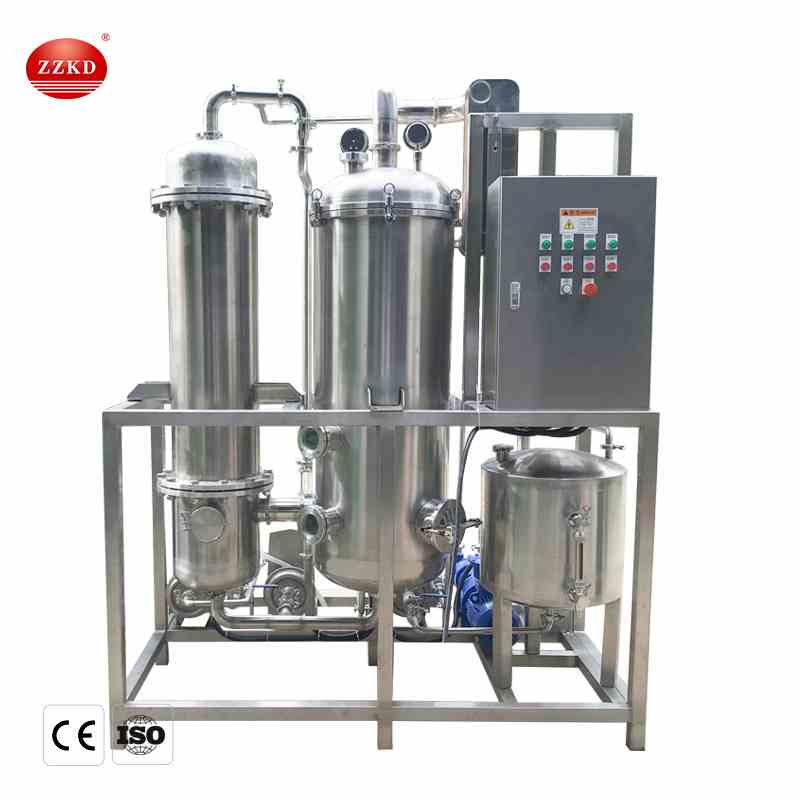What is falling film evaporator
Working principle of falling film evaporator
The material enters the evaporator radially from the top of the heating zone; it is distributed to the heating wall of the evaporator through the distributor, and then the rotating film scraper scrapes the material continuously and uniformly on the heating surface into a liquid film of uniform thickness and spirals. Push down. In this process, the rotating film wiper ensures that the continuous and uniform liquid film produces high-speed turbulence, and prevents the liquid film from coking and scaling on the heating surface, thereby increasing the total transfer coefficient. The light components are evaporated to form a steam flow which rises through the vapor-liquid separator to the external condenser directly connected to the evaporator; the recombined components are discharged from the cone at the bottom of the evaporator. A unique distributor not only splashes the material evenly on the inner wall of the evaporator, prevents the material from splashing into the evaporator and sprays the steam flow, but also prevents the newly entered material from flashing here, which is beneficial to the elimination of foam. It can only evaporate along the heating surface. The upper part of the wiped film evaporator is equipped with a centrifugal separator designed according to the characteristics of the material to separate the liquid droplets in the rising steam flow and return to the distributor.

Structure of falling film evaporator
The main body of the equipment is composed of Ⅰ, Ⅱ, Ⅲ effect heaters, separators, heat pumps, condensers, sterilizers, insulation pipes, material pumps, water pumps and instrument cabinets. This equipment is made of stainless steel in contact with materials.
The scope of application of falling film evaporator
It is used for the evaporation and concentration of water or organic solvent solutions in medicine, food, chemical, light industry and other industries, and can be widely used in waste liquid treatment in the above industries. It is especially suitable for heat-sensitive materials. The equipment operates continuously under vacuum and low temperature conditions. It has high evaporation capacity, energy saving and consumption reduction, low operating costs, and can ensure the invariance of materials during the evaporation process.
Features of falling film evaporator
1. Since the solution flows as a film in the single-pass evaporator, the heat transfer coefficient is high, the residence time is short, and the material is not easily deteriorated, so it is suitable for processing heat-sensitive materials.
2 The liquid retention is small, and the falling film evaporator can take fast operation according to changes in energy supply, vacuum, feed volume, concentration, etc.
8. The feed liquid of the falling film evaporator is added from the top of the evaporator, and falls in a film form along the tube wall under the action of gravity, and during this process it evaporates and thickens, and a concentrated liquid is obtained at the bottom. Falling film evaporator can evaporate materials with higher concentration and higher viscosity.
4. Since the process fluid flows only under the action of gravity, instead of being driven by high temperature difference, low temperature difference evaporation can be used.
5. Falling film evaporator is suitable for the evaporation and concentration of foaming materials. Because the material liquid evaporates in the heating tube as a film, vapor-liquid separation is formed. At the same time, at the bottom of the effect body, most of the material liquid is pumped away, only a small amount Part of the material liquid and all the secondary steam enter the separator to strengthen the separation, and the material-liquid consolidation process does not cause much impact, and the formation of foam is avoided.


